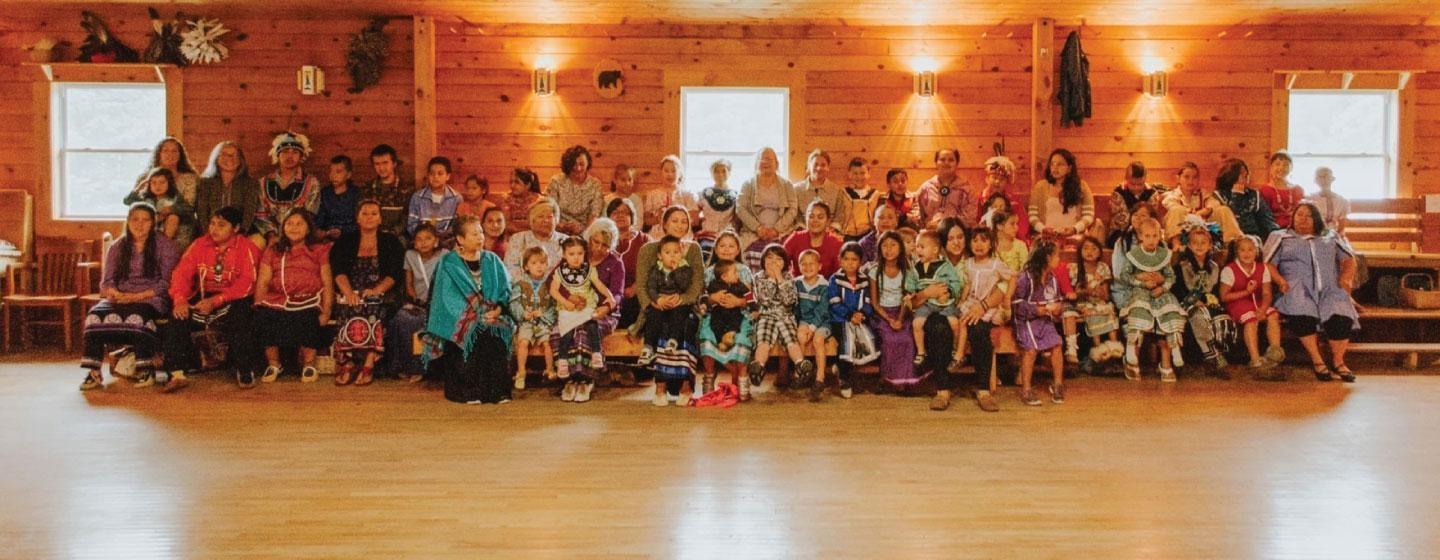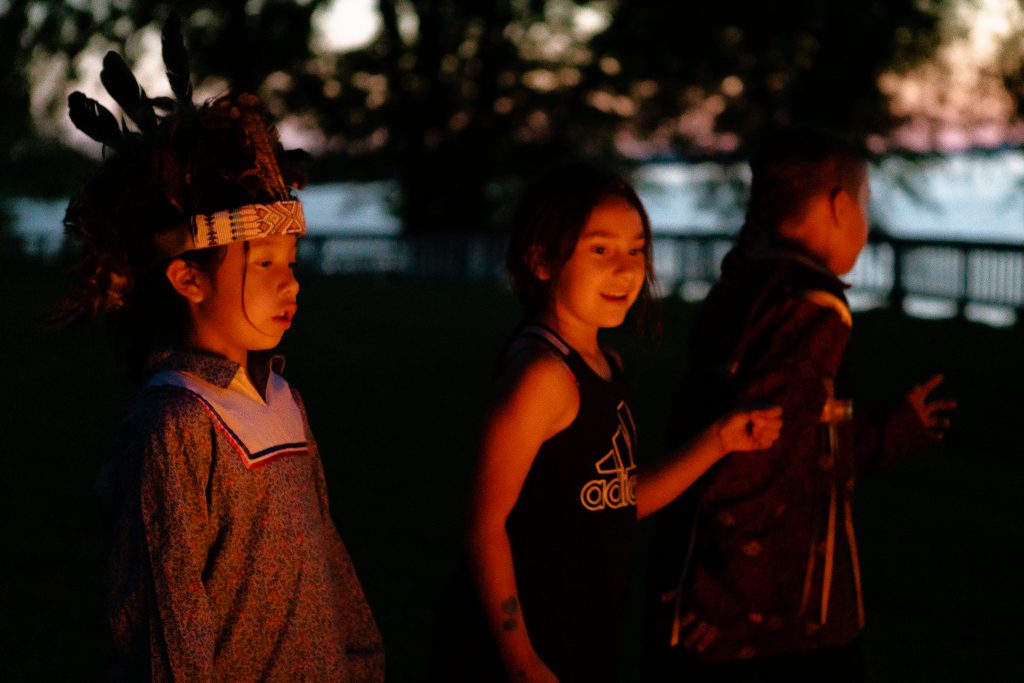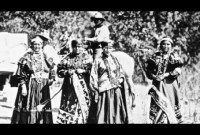
The Resilient Pulse: Akwesasne Mohawk Culture Thrives Amidst Modernity
AKWESASNE, ON/NY/QC – Nestled along the banks of the mighty St. Lawrence River, where the borders of Ontario, Quebec, and New York State converge, lies Akwesasne, "The Land Where the Partridge Drums." It is a place of unique geopolitical complexity, but more profoundly, it is a vibrant heartland for the Kanien’kehá:ka (Mohawk People), a testament to enduring cultural resilience in the face of centuries of external pressures. Here, ancient traditions are not relics of the past but living practices, continuously shaping identity, community, and a profound connection to the natural world.
For the Mohawks of Akwesasne, part of the Haudenosaunee (Iroquois) Confederacy, their cultural practices are deeply interwoven with the Kaianere’kó:wa, the Great Law of Peace. This foundational philosophy, orally transmitted for generations, provides a framework for governance, social harmony, and spiritual understanding. It emphasizes consensus, respect for all life, and the inherent responsibilities of humanity towards the natural world.

"The Great Law isn’t just a set of rules; it’s a way of living, a way of thinking," explains Teiokwaronte, an elder and traditional knowledge keeper from Akwesasne. "It teaches us our place in the web of creation, and our duty to ensure the well-being of the next seven generations. Every decision, every ceremony, every teaching ultimately traces back to these principles."
The Thanksgiving Address: A Daily Affirmation
Perhaps the most pervasive and defining cultural practice in Akwesasne is the Ohen:ton Karihwatehkwen, the Thanksgiving Address, often referred to as "The Words Before All Else." This powerful invocation acknowledges and gives thanks to every element of creation, from the people themselves to the Earth Mother, the waters, the plants, the animals, the sun, moon, stars, and the Creator. It is recited at the beginning of all significant gatherings, ceremonies, and even daily routines.
"It grounds us," says Otsitsia, a young mother who ensures her children learn the Address in Kanien’kéha (Mohawk language) from an early age. "In a world that rushes by, taking so much for granted, the Thanksgiving Address forces us to pause, to be mindful, and to express gratitude. It reminds us daily that everything is interconnected and that we are dependent on the health of the natural world." The cadence of the Address, often delivered with a rhythmic intonation, is a comforting and familiar sound across Akwesasne, echoing in longhouses, community centers, and homes.
Matriarchal Foundations: The Power of Clan Mothers
Central to Akwesasne’s traditional governance and social structure is the powerful role of the Clan Mothers (Otinanongnaniak). Belonging to one of the three original clans – Bear, Wolf, or Turtle – Clan Mothers are the custodians of their clan’s history, culture, and ceremonial life. They are responsible for nominating, advising, and, if necessary, deposing the male Chiefs (Royaner) who represent their clan in council.
"Our women are the backbone of our society," affirms Kawennahere, a respected Clan Mother. "We hold the lineage, we raise the children, and we ensure the continuity of our traditions. Our wisdom is the bedrock upon which our communities stand. The men speak for us, but our voices guide them." This matriarchal system, a stark contrast to the patriarchal structures of many surrounding societies, underscores a deep respect for women’s roles in leadership and decision-making within Haudenosaunee culture.
Rekindling the Language: Kanien’kéha Revitalization

A critical element of cultural preservation in Akwesasne has been the tenacious effort to revitalize Kanien’kéha, the Mohawk language. Like many Indigenous languages globally, Kanien’kéha faced near-extinction due to assimilation policies and residential schools. However, a profound commitment by community members has seen a remarkable resurgence.
The Akwesasne Freedom School, founded in 1979, has been a pioneering force in this effort, offering immersion education from preschool through elementary grades. Students are taught entirely in Kanien’kéha, ensuring a new generation grows up fluent. Adult immersion programs, online resources, and community language classes also abound.
"Language is the vessel of our thought, our history, and our unique worldview," states Kahon:wes, a language teacher at the Freedom School. "When you lose your language, you lose a fundamental part of who you are. Seeing our young people speaking Kanien’kéha, hearing their laughter in our ancestral tongue – that is a victory every single day." The distinct sounds of Kanien’kéha, rich with guttural stops and nuanced inflections, are increasingly heard in homes and public spaces throughout Akwesasne.
Ceremonial Cycle: Honoring the Seasons
Akwesasne’s cultural calendar is marked by a series of ceremonies that correspond with the changing seasons and agricultural cycles, all rooted in gratitude for the Creator’s gifts. These ceremonies, held in the Longhouse, are vital expressions of spiritual connection and community cohesion.
- Midwinter Ceremony (Ronkweksashón:’a): The longest and most significant ceremony, held in late January or early February, it serves as a renewal of the Great Law and a thanksgiving for all creation. It involves dream interpretations, tobacco burning, and social dances.
- Maple Ceremony (Wenhniserá:te): Celebrates the first harvest of the year, the maple sap, vital for traditional foods.
- Strawberry Ceremony (I’sóhkah): Honors the first berry of the season, seen as a heart medicine and a symbol of peace.
- Green Corn Ceremony (Onen:to Óhkwa): A major celebration of the corn harvest, a staple of Haudenosaunee diet, involving dancing, feasting, and storytelling.
"Each ceremony is a reaffirmation of our relationship with the land and with each other," explains a Longhouse faith keeper. "They are not just rituals; they are living prayers, reminding us of our responsibilities and our blessings."
Traditional Arts: Weaving Identity
The hands of Akwesasne artisans tell stories that span generations, preserving intricate skills and cultural narratives through their crafts.
- Sweetgrass Basketry: Akwesasne is renowned for its exquisite sweetgrass baskets. Woven from locally harvested sweetgrass, often combined with black ash splints, these baskets are not merely functional objects but works of art imbued with cultural significance. The fragrant sweetgrass itself is considered sacred, used in ceremonies for purification. "Each strand woven tells a story, connecting us to our ancestors who learned this craft, and to the land that provides the materials," says a basket maker whose family has passed down the tradition for centuries. The delicate, intricate patterns are a hallmark of Akwesasne craftsmanship.
- Beadwork: Intricate beadwork, often featuring floral motifs or symbolic designs, adorns regalia, moccasins, and jewelry. The art form, adapted with the introduction of glass beads, reflects a fusion of traditional aesthetics and new materials.
- Wampum: While wampum belts were historically used as mnemonic devices for treaties and important messages, their significance as cultural objects persists. Replicas and contemporary wampum pieces continue to educate and symbolize the enduring agreements and history of the Haudenosaunee.
The Creator’s Game: Lacrosse
For the Mohawks, lacrosse (Tewaaraton) is far more than a sport; it is "The Creator’s Game," a spiritual gift. Originating as a training exercise for warriors and a way to resolve disputes, it is believed to be a medicine game, played for the enjoyment of the Creator and for healing.
"When we play, we’re not just playing against another team; we’re playing for something bigger than ourselves," says Lyle Thompson, a celebrated Mohawk lacrosse player from Akwesasne, who embodies the modern connection to this ancient game. "It’s a prayer in motion, a way to connect with the Creator and honor our ancestors. The stick is sacred, the game is sacred." Akwesasne has produced numerous world-class lacrosse players, their skill and passion a testament to the game’s deep cultural roots in the community.
Challenges and Unyielding Resilience
Despite the vibrant cultural landscape, Akwesasne faces unique challenges. The international border dissecting the community creates complex jurisdictional issues, impacting everything from daily life to economic development. Historical trauma, including the legacy of residential schools and forced assimilation, continues to reverberate. Environmental degradation from industrial pollutants in the St. Lawrence River also threatens traditional practices like fishing and harvesting medicines.
Yet, Akwesasne stands as a powerful testament to unyielding resilience. The community actively asserts its sovereignty, governs its internal affairs, and continually adapts its cultural practices to contemporary realities without compromising their essence. From the elder speaking Kanien’kéha to a young person learning to weave a sweetgrass basket or pick up a lacrosse stick, the cultural pulse of Akwesasne beats strong.
"Our culture is not static; it’s a living, breathing entity," concludes a community leader. "It adapts, it grows, but its core remains. We are teaching our children not just the words and the songs, but the spirit of our people – the spirit of gratitude, respect, and connection. That is the true legacy of Akwesasne."
In Akwesasne, the drumming of the partridge is not just a sound in the wilderness; it is the rhythmic heartbeat of a people determined to keep their ancient ways alive, ensuring their culture continues to thrive for generations to come.


